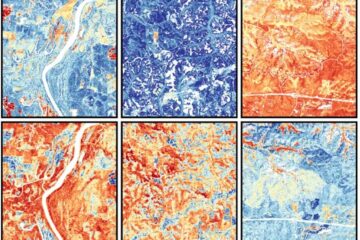UT Southwestern researchers discover role of two genes involved in cholesterol excretion

Two specific genes involved in cholesterol transport are required for the most common way excess cholesterol is expelled from our bodies, according to scientists at UT Southwestern Medical Center at Dallas.
The genes, the researchers report, are essential for efficient secretion of cholesterol into the bile, which is the major route that cholesterol exits the body. The discovery sheds new light on potential therapies that could play an important role in reducing high cholesterol, a major risk factor of atherosclerotic diseases, such as coronary heart disease and stroke.
The new findings are reported in this week’s issue of the Proceedings of the National Academy of Sciences.
“The disruption of the two genes, Abcg5 and Abcg8, reveals their crucial role in biliary cholesterol secretion,” said Dr. Liqing Yu, an instructor in the Eugene McDermott Center for Human Growth and Development and in molecular genetics and lead author of the study. “In humans and mice, the secretion of cholesterol into the bile is essential for maintaining cholesterol homeostasis and constitutes a major defense against the accumulation of dietary cholesterol in blood and tissues.”
Dr. Helen Hobbs, senior author of the study, said, “By activating or upregulating Abcg5 and Abcg8 you could theoretically reduce cholesterol in the body by increasing cholesterol transport into the bile and limiting cholesterol absorption. This may also reduce cholesterol in the blood.” Hobbs directs the Eugene McDermott Center for Human Growth and Development and the Donald W. Reynolds Cardiovascular Clinical Research Center. She also is an investigator in UT Southwestern’s Howard Hughes Medical Institute.
The researchers uncovered this critical pathway by studying mice that lacked the genes.
When researchers fed the mice high cholesterol diets, “We discovered that the fatty liver was developed due to a massive accumulation of cholesterol,” Yu said. “We think this happens because the dietary cholesterol cannot be efficiently secreted into the bile, but it is accumulated in the liver and plasma when Abcg5 and Abcg8 are disrupted.”
Liver and plasma cholesterol levels were increased by as much as 18-fold and 2.4-fold, respectively, in the mice after they ate a cholesterol-rich diet. Disruption of the two genes also resulted in a 30-fold increase in plasma levels of sitosterol, the major plant sterol, and a two- to threefold increase in fractional absorption of dietary plant sterols.
“Plant sterols are similar to cholesterol, structurally, and in the absence of Abcg5 and Abcg8 the compounds accumulate in the body, which leads to a rare inherited disease called sitosterolemia,” Yu said. “Individuals with this disease have dramatically increased plasma plant sterol levels, which is associated with premature atherosclerotic coronary heart disease.”
UT Southwestern researchers, in conjunction with researchers at Tularik Inc., discovered the two genes in 2000.
Before scientists identified the genes, the molecular mechanism by which dietary cholesterol is absorbed and the mechanisms by which cholesterol and other sterols are secreted into the bile were not known, Hobbs said.
“The actual discovery of the two genes in 2000 led to a better understanding of two important pathways of cholesterol metabolism,” she said.
Other UT Southwestern researchers involved in the study were Dr. Jonathan Cohen, associate professor of internal medicine; Dr. Robert Hammer, professor of biochemistry; and Dr. Jia Li-Hawkins, now with Pfizer. Researchers from the University of Bonn in Germany also contributed.
The studies were supported by The Howard Hughes Medical Institute, the National Institutes of Health, the Perot Fund; the W. M. Keck Foundation; and the Donald W. Reynolds Cardiovascular Clinical Research Center.
To automatically receive news releases from UT Southwestern via e-mail, go to http://www3.utsouthwestern.edu/ and click on “Latest News.” Then go to “Receive our News” to subscribe.
Media Contact
All latest news from the category: Life Sciences and Chemistry
Articles and reports from the Life Sciences and chemistry area deal with applied and basic research into modern biology, chemistry and human medicine.
Valuable information can be found on a range of life sciences fields including bacteriology, biochemistry, bionics, bioinformatics, biophysics, biotechnology, genetics, geobotany, human biology, marine biology, microbiology, molecular biology, cellular biology, zoology, bioinorganic chemistry, microchemistry and environmental chemistry.
Newest articles

Machine learning algorithm reveals long-theorized glass phase in crystal
Scientists have found evidence of an elusive, glassy phase of matter that emerges when a crystal’s perfect internal pattern is disrupted. X-ray technology and machine learning converge to shed light…

Mapping plant functional diversity from space
HKU ecologists revolutionize ecosystem monitoring with novel field-satellite integration. An international team of researchers, led by Professor Jin WU from the School of Biological Sciences at The University of Hong…

Inverters with constant full load capability
…enable an increase in the performance of electric drives. Overheating components significantly limit the performance of drivetrains in electric vehicles. Inverters in particular are subject to a high thermal load,…





















